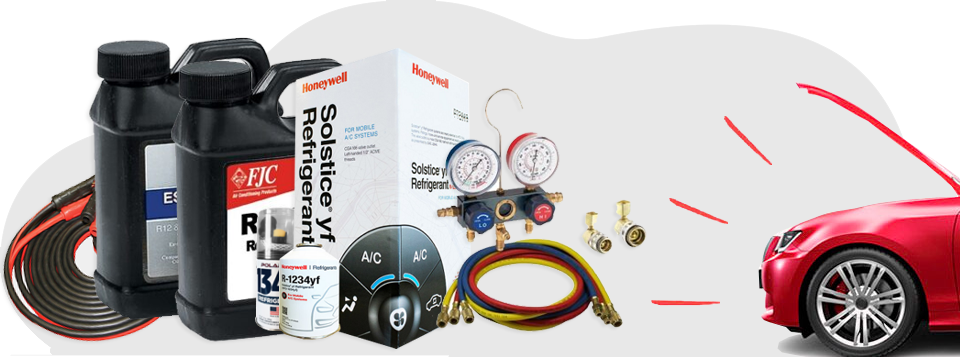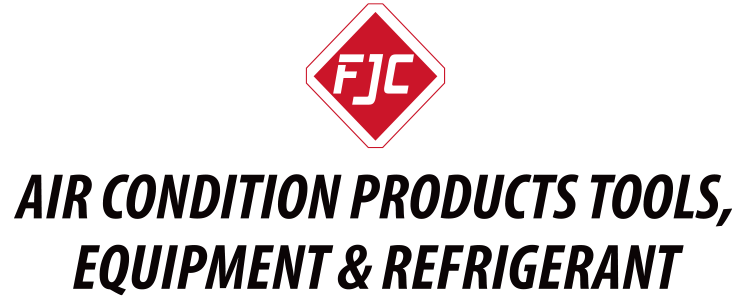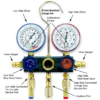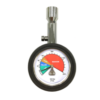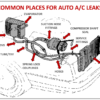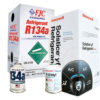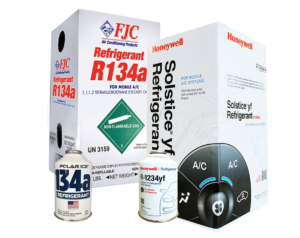
Component/Design Differences
One of the compelling reasons R-1234yf was overwhelmingly chosen to replace R-134a in automotive air conditioning systems is because there are not really many differences between the way the systems are designed and work. There are a couple minor component changes in the Thermal Expansion Valves (replace orifice tubes or expansion valves) and Condensers, but overall the system will be familiar to anyone who works on A/C systems. The service ports in both systems are quick-connect, but they are taller in the yf systems to avoid cross-contamination.
National Casino: Der Treffpunkt für anspruchsvolle deutsche Spieler
Willkommen im National Casino – dem Treffpunkt für anspruchsvolle deutsche Spieler, die auf der Suche nach einem erstklassigen Spielerlebnis sind. In diesem Artikel tauchen wir ein in die faszinierende Welt dieses renommierten Casinos, das für seine Exklusivität und Qualität bekannt ist. Von der eleganten Atmosphäre bis hin zur Vielfalt an Spielen und Serviceleistungen bietet das National Casino eine unvergleichliche Erfahrung für alle, die das Glücksspiel lieben.
Wir werden uns eingehend mit den Gründen befassen, warum das National Casino die erste Wahl für viele deutsche Spieler ist. Von der beeindruckenden Auswahl an Spielautomaten und Tischspielen bis hin zu den großzügigen Bonusangeboten und erstklassigen Kundenservice – hier ist alles auf die Bedürfnisse und Wünsche anspruchsvoller Spieler zugeschnitten. Tauchen Sie mit uns ein in die Welt des National Casinos und entdecken Sie, warum es zu Recht als einer der Top-Adressen in der deutschen Glücksspielszene gilt.
Die Geschichte von National Casino
National Casino ist der ultimative Treffpunkt für anspruchsvolle deutsche Spieler, die nach einer erstklassigen Online-Glücksspiel-Erfahrung suchen. Mit einem breiten Angebot an spannenden Spielen, großzügigen Boni und einem erstklassigen Kundenservice bietet das Casino eine erstklassige Plattform für Spieler, die Wert auf Qualität und Exzellenz legen.
Die Auswahl an Spielen im National Casino ist beeindruckend und umfasst beliebte Titel von führenden Softwareanbietern wie NetEnt, Microgaming und Play’n GO. Von Slots über Tischspiele bis hin zu Live-Dealer-Spielen gibt es für jeden Geschmack und jede Vorliebe etwas Passendes. Die Spiele sind fair, unterhaltsam und bieten eine erstklassige Grafik und Soundeffekte für ein rundum beeindruckendes Spielerlebnis.
Als deutscher Spieler bei National Casino profitieren Sie von großzügigen Willkommensboni, regelmäßigen Promotionen und einem lukrativen Treueprogramm. Mit schnellen Auszahlungen und sicheren Zahlungsmethoden können Sie sich voll und ganz auf Ihr Spielerlebnis konzentrieren, ohne sich um Ihre finanziellen Transaktionen sorgen zu müssen.
Das engagierte Kundenserviceteam von National Casino steht deutschen Spielern rund um die Uhr zur Verfügung, um bei Fragen oder Anliegen behilflich zu sein. Mit einer benutzerfreundlichen Website und einer mobilen App können Sie das Casino bequem von überall aus genießen und sich auf ein unvergessliches und erstklassiges Spielerlebnis freuen.
Die besten Spiele und Angebote für deutsche Spieler
National Casino ist der ideale Treffpunkt für anspruchsvolle deutsche Spieler, die auf der Suche nach einer erstklassigen Glücksspielerfahrung sind. Mit einer Vielzahl von beliebten Spielen und großzügigen Boni bietet das Casino eine erstklassige Plattform für alle, die Spannung und Unterhaltung suchen.
Bei National Casino erwartet die Spieler eine breite Auswahl an hochwertigen Casino-Spielen, darunter Slots, Tischspiele und Live-Dealer-Spiele. Die Webseite nationalcasino365.com ist benutzerfreundlich gestaltet und sorgt für ein reibungsloses Spielerlebnis, egal ob auf dem Desktop oder mobil.
Mit großzügigen Willkommensboni und laufenden Aktionen belohnt National Casino seine Spieler regelmäßig. Darüber hinaus bietet das Casino einen zuverlässigen Kundenservice, der rund um die Uhr verfügbar ist, um bei Fragen oder Anliegen zu helfen.
Entdecken Sie noch heute die aufregende Welt des Online-Glücksspiels bei National Casino unter nationalcasino365.com und erleben Sie Spielspaß auf höchstem Niveau in einem sicheren und vertrauenswürdigen Umfeld.
Der exklusive VIP-Club von National Casino
National Casino ist der ideale Treffpunkt für anspruchsvolle deutsche Spieler, die ein erstklassiges Spielerlebnis suchen. Mit einer breiten Auswahl an hochwertigen Spielen von renommierten Anbietern bietet das Casino eine erstklassige Plattform für anspruchsvolle Spieler, die auf der Suche nach Nervenkitzel und Unterhaltung sind.
Das Casino bietet eine Vielzahl von spannenden Slots, klassischen Tischspielen und Live-Dealer-Spielen, die die Bedürfnisse und Vorlieben deutscher Spieler perfekt abdecken. Die hochmoderne Software sorgt für ein reibungsloses Spielerlebnis und eine realistische Casino-Atmosphäre, die es den Spielern ermöglicht, in die Welt des Glücksspiels einzutauchen.
Die großzügigen Boni und Promotionen von National Casino bieten den Spielern die Möglichkeit, ihr Guthaben zu maximieren und ihre Gewinnchancen zu erhöhen. Mit schnellen Auszahlungen und einem zuverlässigen Kundensupport ist das Casino darauf ausgerichtet, den Spielern ein Höchstmaß an Zufriedenheit und Komfort zu bieten.
National Casino setzt auf Sicherheit und Fairness und ist von einer angesehenen Glücksspielbehörde lizenziert. Deutsche Spieler können sich darauf verlassen, dass sie in einer sicheren und geschützten Umgebung spielen, in der ihr Wohl und ihre Interessen stets im Mittelpunkt stehen.
Kundenservice und Sicherheit bei National Casino
National Casino ist der perfekte Treffpunkt für anspruchsvolle deutsche Spieler, die auf der Suche nach erstklassiger Unterhaltung sind. Mit einer breiten Auswahl an exklusiven Spielen von renommierten Anbietern wie NetEnt, Microgaming und Evolution Gaming bietet das Casino ein unvergleichliches Spielerlebnis. Von klassischen Slots bis hin zu Live-Dealer-Spielen – hier findet jeder Spieler sein persönliches Glück.
Die großzügigen Bonusangebote und regelmäßigen Promotionen machen das National Casino besonders attraktiv für deutsche Spieler, die nach zusätzlichen Anreizen suchen. Mit einem professionellen Kundenservice, der rund um die Uhr zur Verfügung steht, können sich Spieler auf eine erstklassige Betreuung verlassen. Die sichere und zuverlässige Zahlungsabwicklung sorgt zudem für ein reibungsloses Spielerlebnis ohne unerwünschte Unterbrechungen.
National Casino legt großen Wert auf Fairness und Transparenz, was es zu einer vertrauenswürdigen Plattform für deutsche Spieler macht. Die benutzerfreundliche Oberfläche und das ansprechende Design tragen zusätzlich dazu bei, dass sich Spieler hier wohlfühlen und in einer sicheren Umgebung ihrer Leidenschaft fürs Glücksspiel nachgehen können.
Zusammenfassend ist das National Casino zweifellos der ideale Treffpunkt für anspruchsvolle deutsche Spieler auf der Suche nach einer erstklassigen Spielerfahrung. Mit einem umfangreichen Spielangebot, großzügigen Boni und einem professionellen Kundenservice bietet diese Plattform alles, was Spieler benötigen, um ihr Glück zu versuchen. Die hochmoderne Technologie, die sichere Zahlungsmethoden und die benutzerfreundliche Oberfläche machen das National Casino zu einer erstklassigen Wahl für alle, die eine erstklassige Online-Casino-Erfahrung suchen. Tauchen Sie ein in die Welt des National Casinos und erleben Sie ein unvergleichliches Spielerlebnis!
Another difference is that yf Evaporators must meet SAE Spec J2842, which was not an issue in R-134a systems.
A final difference is that most (though not all) R-1234yf cars will have a Suction Line Heat Exchanger. This part is part of the line assembly and is designed to improve efficiency. They have no moving parts.
Operating Pressure/Temperature Differences
The pressure/temperature curves for R-1234yf and R-134a are very similar. As illustrated in the chart below, the curves below run together nearly throughout the curve, only slightly breaking paths at around 250 psig/150 degrees and above
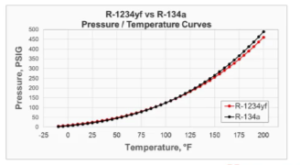
Flammability/Safety
R-1234yf has been designated as MILDLY flammable. This simply means that it could ignite if it comes in contact with an open flame. It is important to note that it does have a low burning velocity and low heat or combustion. It has a very low pressure rise and the flame is very slow moving (less than 10cm/sec.) Compared to other liquids/chemicals/gases in a shop, it is an EXTREMELY slow moving flame. It has low volume in a vehicle, and low impact flammability. By comparison, and as illustrated in the chart below, it has the significantly lowest flammability impact of the following common automotive fluids: gasoline, diesel, engine oil, transmission fluid, and power steering fluid.
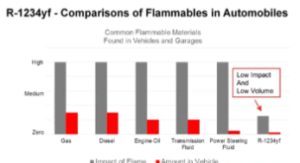
Source: Honeywell Video Training Series
LMK 2019



